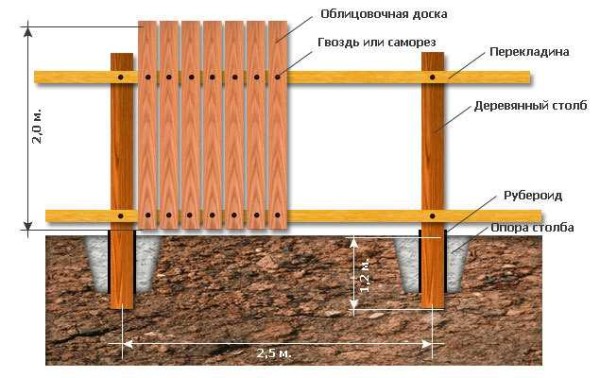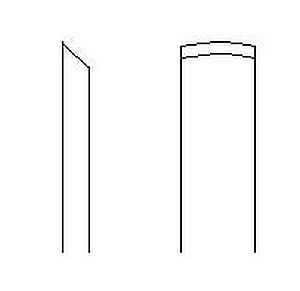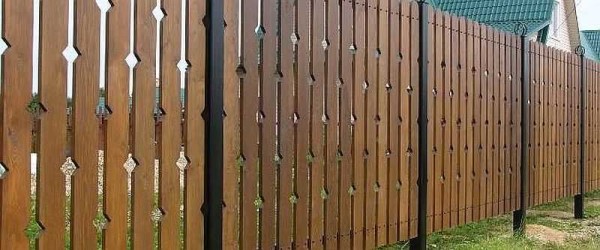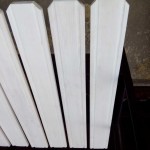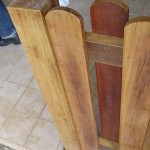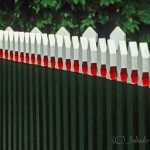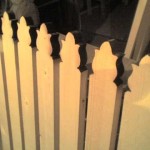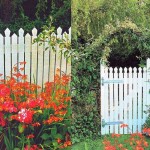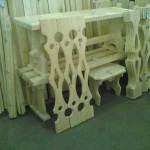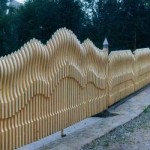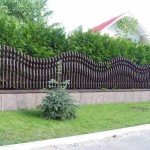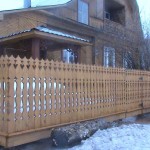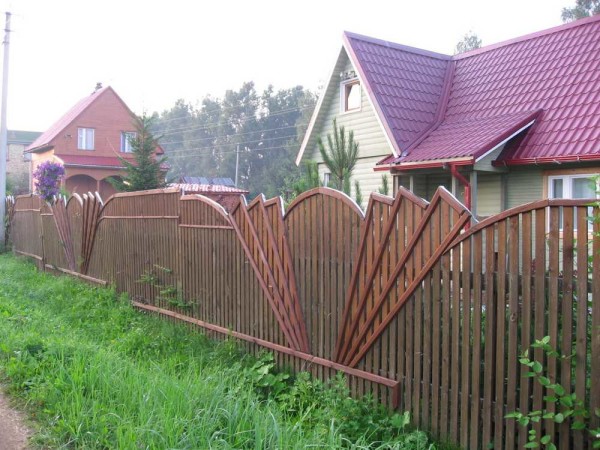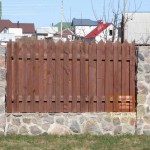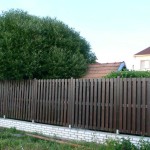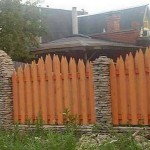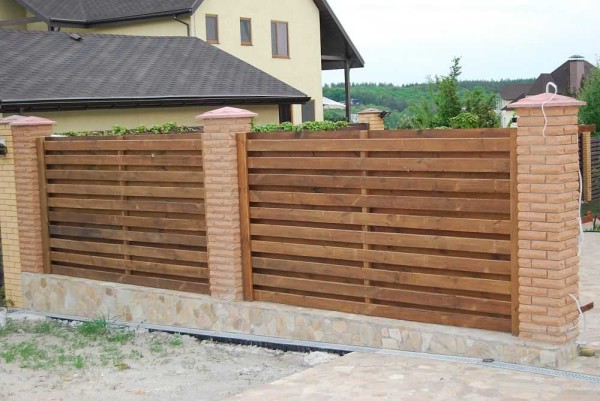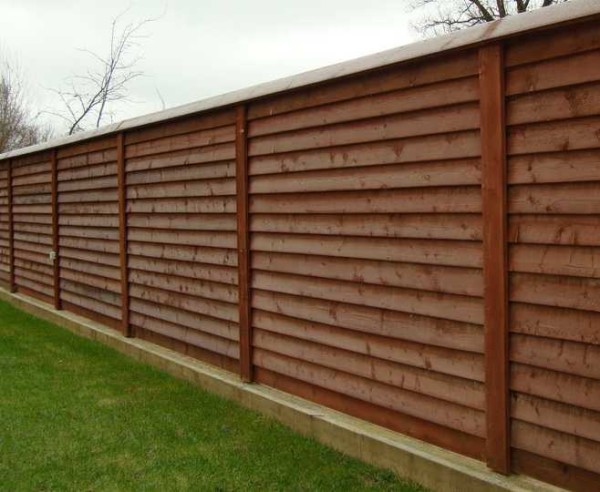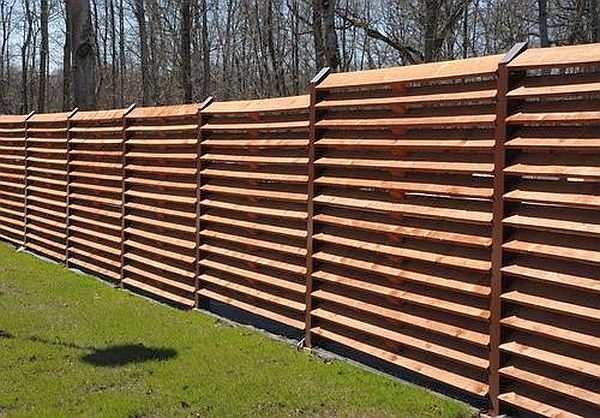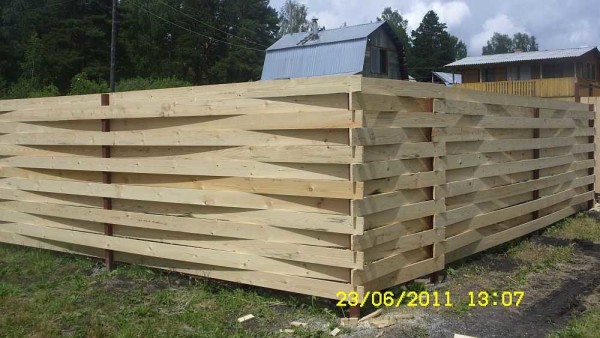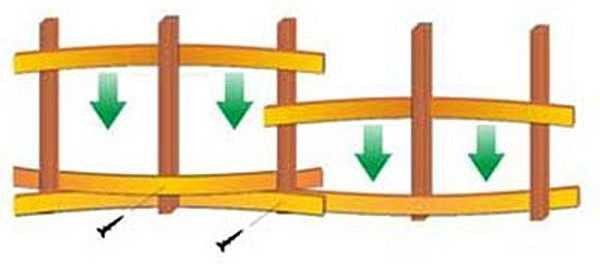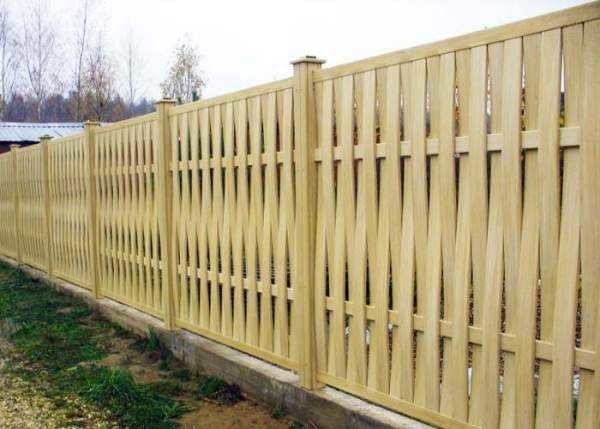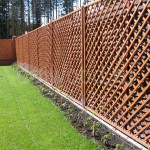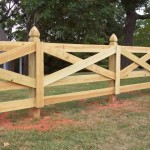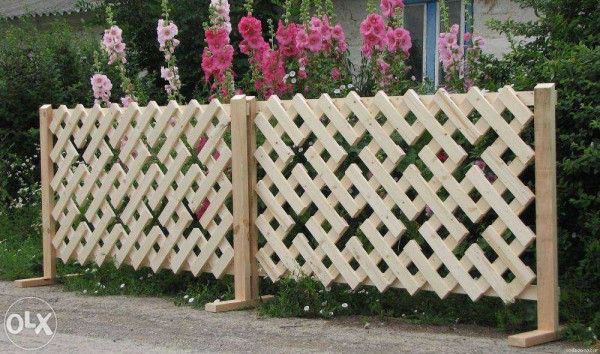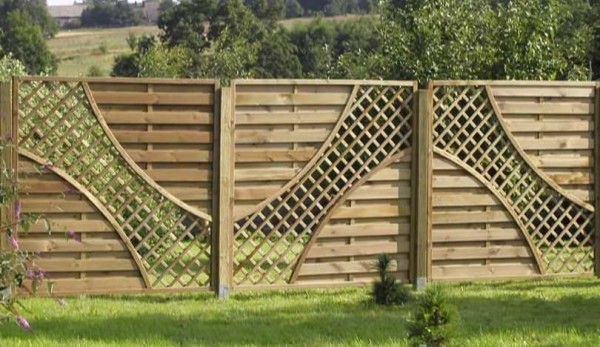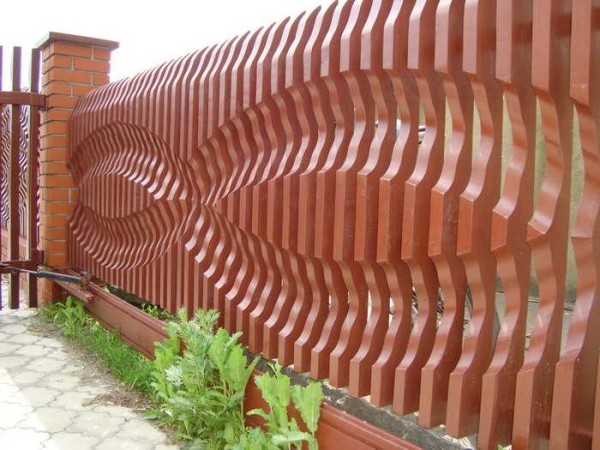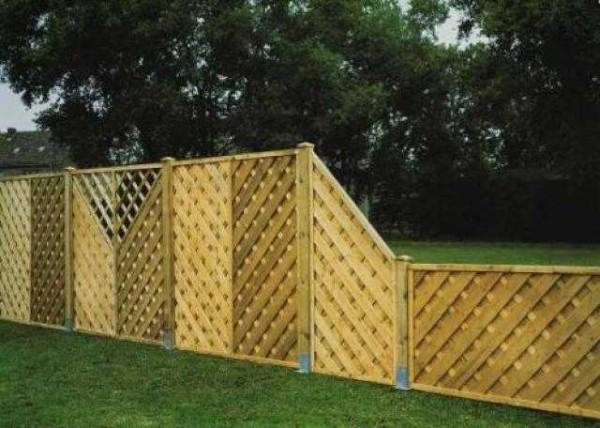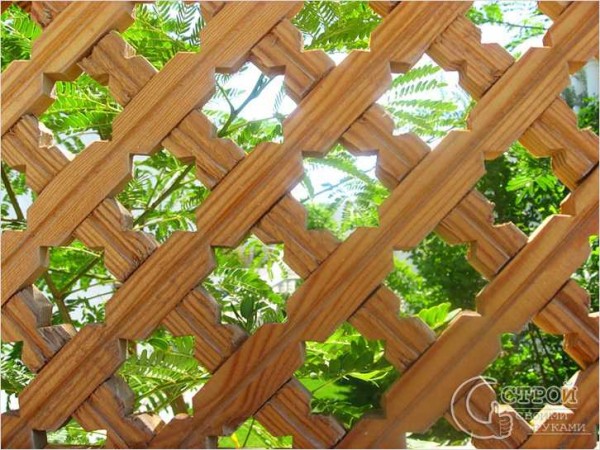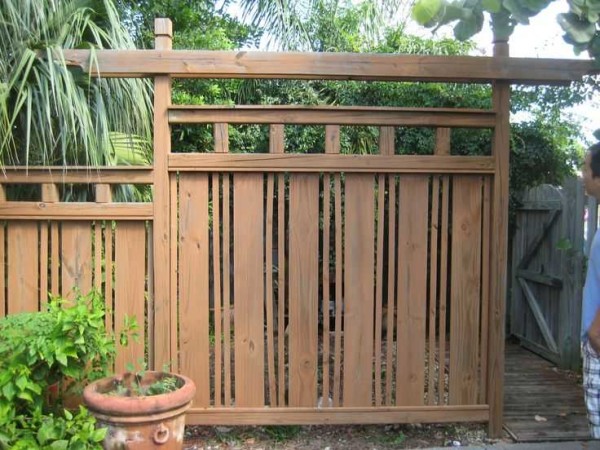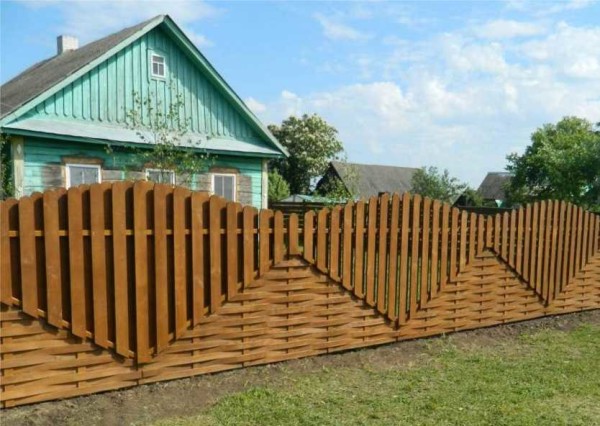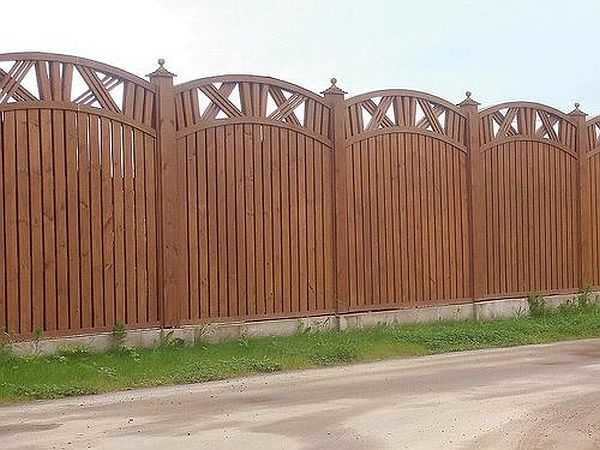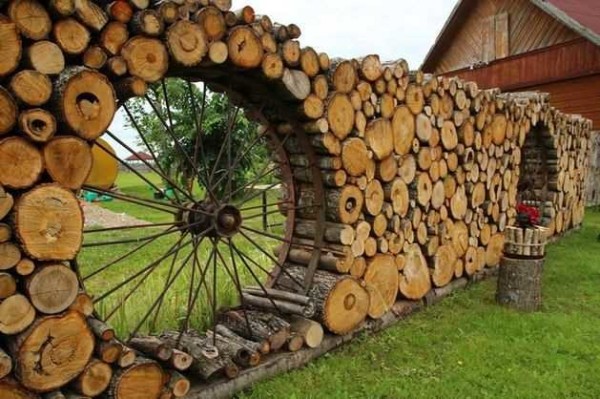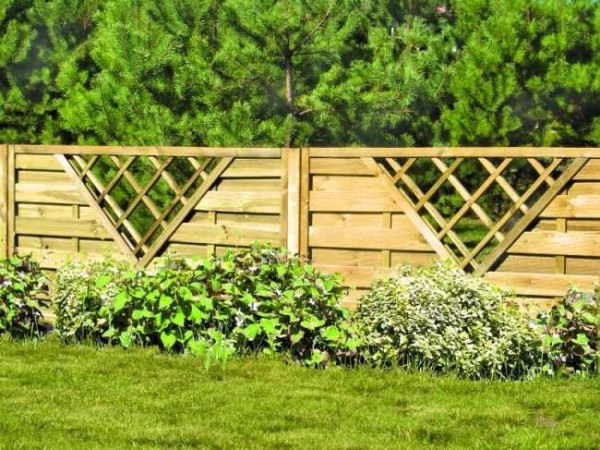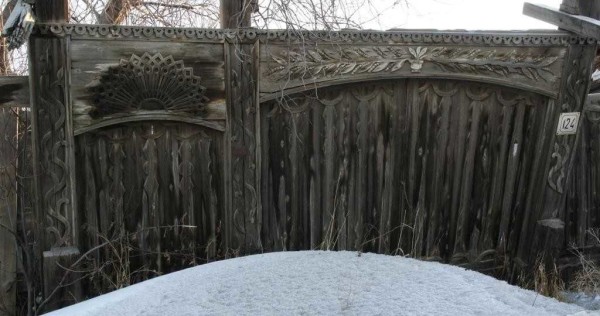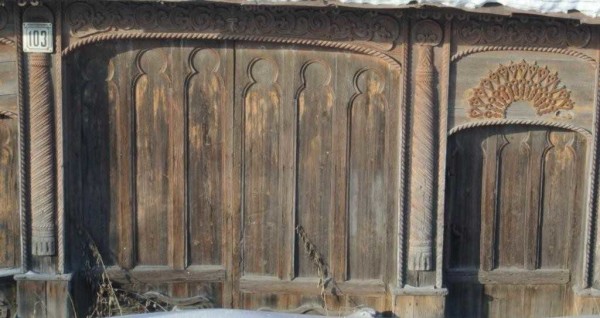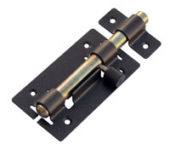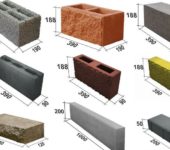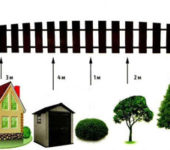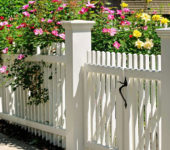Deciding how to make a fence made of wood
In recent years, the fashion for wooden buildings leads to the fact that more and more developers think that a metal fence may not be the best solution. From the point of view of durability, maybe yes, but from the point of view of aesthetics, it is inferior to wood. The wooden fence has somewhat lost its popularity due to its short life: wood, with constant exposure to the sun and water, quickly collapses. In order to increase the service life, the protective paint coating must be constantly refreshed. It takes a lot of time and requires a lot of paint when it is long. This problem has become less acute, since the new antiseptics that have appeared recently make it possible to extend the life of the fence, and also guarantee the durability of the staining for several years. The term is different - from 2-3 years to 5-7. It depends on the type of antiseptic impregnation and the manufacturer, but finding "long-playing" is not difficult: in any more or less large store.
Moreover, these impregnations do not paint over the texture of the wood: all the veins are visible. They just change color, usually to a darker one. Such a fence made of wood looks solid and rich. Even a simple picket fence, and even more difficult, and even more so.
What is important is that you can put a wooden fence with your own hands alone, if necessary, even without the involvement of assistants. It is also important: a significant part of the work - the preparation of wood - can be done not on site, but, say, in a garage or workshop. And start it long before the start of construction. For example, from autumn to spring, and the construction itself should be started when the weather is already warm.
Wood is a very flexible material and the simplest thing can be done so that it looks like a work of art. This is also true for fences. If you wish, you can make such a "candy" that it is expensive to see. There are several structures of wooden fences.
The content of the article
Fence
The simplest is a picket fence. This is a set of edged boards or planks of the same, usually width, which are nailed vertically to two or more transverse rails.
The top shape may differ. Sawing the floor 90 ° is the simplest option, but far from the best, and not only from the point of view of aesthetics. The top of such a picket fence, even painted, is exposed to intense moisture, as a result, the coating in this place is destroyed first. And the wood pores in the perpendicular cut remain open. Rain, fog, melting snow / ice are absorbed by them, which leads to the destruction of the wood. To avoid this, cut the tops off not floor 90, but at 45 °. If you look at such a board in profile, the top will be chamfered (see the picture below).
The distance between two adjacent pickets is chosen according to your wishes. You can make a solid fence, adjusting one close to the other, it is possible - translucent, leaving a gap of 1-2 cm, or it can be completely transparent - with a large distance equal to the width of the boards or even more. Such options are popular for internal fences, which are more designed to separate areas and mark boundaries than to protect from something. For outdoor fences facing the street, they usually choose a continuous installation, maybe with a very small distance, so that the boards do not "swell" in wet weather.
Sawed tops add variety. They can be sharpened in different ways - with a rounded top, in the form of peaks, triangles, trapezoids. All this in different versions and combinations.
- The top of the picket is sawn in the form of a trapezoid
- The rounded top is the most popular
- In addition to the original shape, the original color
- This is more like an openwork fence, but decorative - for sure
- The tops in the form of lilies - the fence will be beautiful
- Peaks and triangles - in combination and independently
Some even make truly works of art: a carved fence requires a lot of perseverance. Painstaking work, but the result is worth it.
- Carved fence slats - beauty
- You can't make such an option even for a template
- Nice fence. No one will argue
- Beauty - carved wood fence
Make curly tops faster and easier with a template. Cut a sample from a sheet of plywood, bring it to perfect condition. Then cut out all the rest for this templates. You can cut using a jigsaw or a milling machine.
You can buy a jigsaw for such a case. All the same, even taking into account this expense item, it will be cheaper than buying ready-made carved picket fences. The downside here is that it takes a lot of time, and the pickets are not the same: the file will go a little to the right, then a little to the left. Then the edges still have to be processed with sandpaper.
Buying a milling machine, if you don't plan to use it later, is unprofitable. And those who already have one can buy floating head cutters and make a curly picket fence with it. The height of the cutter's cutting part is equal to the thickness of the board that you will be processing, and the head rests against the template.
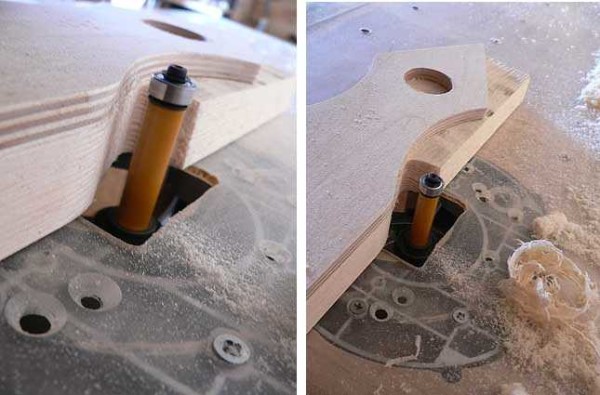
Milling a picket fence according to a template
In both cases, you will have to somehow fix the template on the workpiece. This can be done with thin nails or by gluing double-sided tape to the template.
But if you approach the process creatively, then even from even thin strips you can make a beautiful wooden fence: by nailing it at different angles.
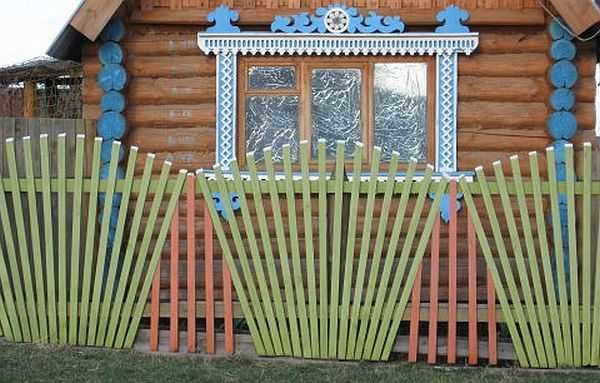
Such beauty is easy to make (note: the tops are at 45 °)
The authors of this wooden picket fence made it even easier: they made only the height nonlinear, emphasizing the relief with a bar nailed from above. By the way, this is the second way to significantly increase the lifespan of a wooden fence - the bar blocks water access to the most vulnerable open cross-sections). Also non-linearity is given by the planks nailed on the surface in the form of frames, and the wood inside is painted in a lighter color. Agree, original.
About a fence made of corrugated board can be read here.
Fence made of wood "chess" or "chess"
In fact, this is one of the subspecies of the picket fence. The boards are packed alternately from one side to the other of the crossbar. It turns out an interesting volumetric look.
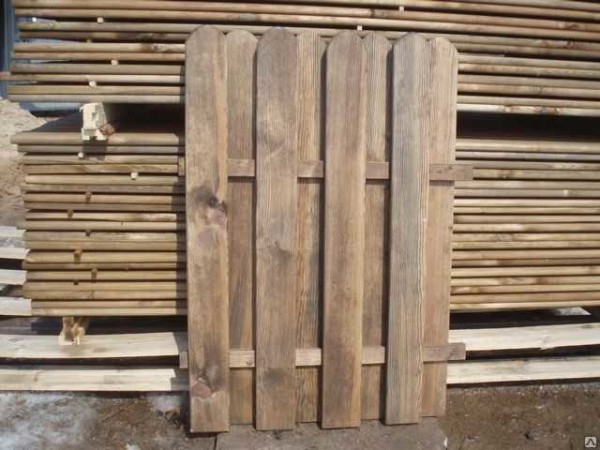
The principle of installation of pickets in the fence "chess" or "chess"
If you look at such a fence exactly opposite, it looks like a deaf, if to the side, then at a certain angle some part of the yard will be visible through the gap. The degree of transparency is regulated by the entry of one bar, after another. You can make the viewability zero. For example, with a slat width of 10 cm, the distance between them should be no more than 6 cm. No matter how you look, you cannot see anything. The disadvantage is the high consumption of wood. But fences are very beautiful, especially in combination with brick or stone pillars and figured tops.
- One of the options for a checkerboard fence on a plinth and with stone pillars
- Checkerboard on a plinth - such a fence looks gorgeous
- Sharp tops look good
They also make horizontal fences from chess.But here you need to keep in mind that it is very convenient to climb over such a fence: boards are like steps. True, any fence is not such a serious obstacle. Rather, he is a protection from prying eyes than from serious attempts.
Such "chess" looks decent and solid. Pillars can be any: metal, wood, stone, concrete. If they put metal posts, they are made from a profiled thick-walled pipe (3 mm). Above ground level, from the front and back sides, they are sewn up with boards (to the posts with bolts or self-tapping screws), which are larger than the width of the profile: they should protrude on the sides by 3-6 cm. Thus, we get guides into which the boards are inserted. The boards are then attached from the inside to the planking of the posts.
Read here how to make a foundation for a fence.
Fence "Herringbone"
Another type of horizontal fence is called a herringbone. It is named so because the boards are stacked close to one another, and with an overlap on the one below. In profile, it looks like a Christmas tree, as children draw it.
It is more difficult to climb up such a fence. Note that there is a protective visor on top. It protects the most vulnerable part of the fence, significantly extending its life, as well as delaying the time for the next painting. After all, usually the top and bottom of the coating is the most damaged. From below this fence is protected by a plinth, from above - by a visor.
Photo reports on the construction of fences are here.
Wooden fences "blinds"
They differ from those described above in that the boards do not adjoin one another. They are fixed at an angle, but with some clearance. This type of fencing does not create a solid wall and the courtyard can be viewed, although this requires sitting down or even lying down - depending on the angle of inclination.
This type of fence is very uneconomical - wood consumption is usually high. It is also difficult to assemble: attach a bar (corner) under each board or saw a notch in the post.
But with this construction, good ventilation of the site is provided. This is important if the climate or area is humid. You cannot install a solid fence: there will be a puddle under it and the dirt in the yard will never dry out.
Plank braid - a beautiful fence
The fence, made of boards bent between the posts, looks unusual. They are intertwined between the posts like a traditional wattle fence. They only make it out of long boards.
They are most often found in horizontal design. There are fewer joints and it is easier to bend long spans.
There are also vertical braids. To give them a complete look, planks are nailed at the top and bottom - they both hold the edges of the boards and protect them from bad weather.
how to make a real wattle, read here, but about how ingrow a hedge - here.
How to make such beauty, see the video. Really simple, but decent strength is required.
Lattice fences
A wide variety of gratings are made from thin, and not very, slats: with different angles, frequency of the slats, etc. These fences play rather a decorative role and are used either for fencing inside - the water thief, in the garden - or for the front door - to mark the boundaries, but not to cover the beauty.
- Fence made of wooden slats lattice "in a cage"
- Planks are stuffed on both sides of the post in different directions, but at the same angle
- Lattice fence made of boards - looks serious
- Double slats - such a lattice fence looks interesting
Photos of beautiful fences
You just wonder what beauty people can make from a piece of wood. Really beautiful. And some, while not very difficult.
Maybe someone will be inspired by these photos of old wooden fences, they can be repeated ...


